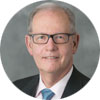Download PDF

By 2020, about 7.8 billion people will inhabit our planet. According to the International Association for the Prevention of Blindness, about 276 million of them will be blind or have a visual acuity of about 20/70 or worse. By 2050, this will have risen to more than 700 million people! They are cared for by a global population of some 200,000 ophthalmologists, spread unevenly across the globe. In developed countries, the prevalence of ophthalmologists is generally about 60-100 per million population. In many developing nations, it is under 20 per million—and frequently under 10 per million. The training, experience, and resources those ophthalmologists possess are highly variable.
Discussing the causes of moderate to severe vision loss and blindness is beyond the scope of this column. Suffice it to say that in recent decades there have been successes (onchocerciasis), substantial progress (trachoma), persistent issues (cataract and uncorrected refractive error), and increasing problems (a near 70% predicted increase in vision-threatening diabetic retinopathy between 2015 and 2040).
The January 2018 EyeNet contained a great article entitled “Global Ophthalmology” that highlighted the work of volunteer ophthalmologists in building community capacity, as opposed to simply directly delivering care (as valuable as that can be).
In addition to the work of individual ophthalmologists, the Academy itself takes seriously our global responsibility as the largest membership organization in ophthalmology. Our efforts are coordinated by a Global Alliances Secretariat headed by Richard L. Abbott, MD, and led at the staff level by Jane Aguirre, Vice President of Membership and Alliances. Valuable input is provided by several Academy bodies (including the Global Advisors Committee) and by the Academy’s 2 international trustees (Lihteh Wu, MD, of Costa Rica, and Kgaogelo Edward Legodi, MD, of South Africa).
The Academy is first and foremost an educational organization, and therefore providing Academy resources on a global basis remains a central focus. Currently, the 13-volume Basic and Clinical Science Course is used in 70 countries. With the generous contributions of Academy members, sets are made available at no charge to training programs in developing countries.
With regard to web-based resources, the ONE Network remains the global platform for online ophthalmic education. It contains more than 17,000 pages of content, over 2,500 videos, and 1,500-plus self-assessment questions. Last year, it was accessed 3.3 million times, and 58% of the users were from outside the United States—more than 80,000 ophthalmologists! The Academy Express email blast is sent to over 79,000 ophthalmologists each week in regional-specific editions, in partnership with 70 national and supranational societies. And EyeWiki, the Academy’s open access ophthalmology wiki with nearly 750 curated topics, saw 7 million page views and more than 3 million visitors worldwide in 2017.
Building global capacity and relationships goes far beyond numbers, however. Thousands of ophthalmologists from outside the United States (generally between 5,000-10,000) attend the annual meeting for person-to-person learning. Several from developing nations are sponsored by initiatives such as the Rotary Club Host Project. Ophthalmologists are hosted at a U.S. member’s home for a week and then sponsored to attend the annual meeting to learn and connect with global colleagues. In fact, 122 ophthalmologists from 57 countries have been through this program! Finally, we provide opportunities for younger ophthalmologists through an Academy-developed Global Directory of Training Opportunities (with more than 3,100 listings), Young Ophthalmologist committees, and affiliated regional Leadership Development Programs.
All members and supporters should take pride that, although we are a “national society,” the Academy recognizes that the pain and consequences of diminished vision respect no national boundaries. Our global responsibility is to project our resources and capabilities to benefit our professional colleagues and their communities wherever they live.